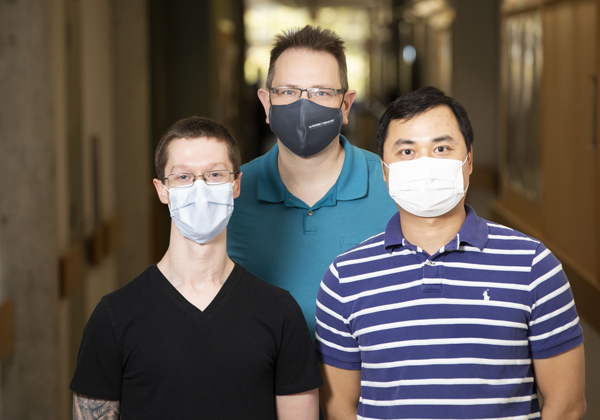Cancer specialists at Vanderbilt University Medical Center, in partnership with biochemists and structural biologists across the Vanderbilt University campus, are taking “personalized” cancer therapy to a new level.

Using computer modeling and a structure-based approach, Christine Lovly, MD, PhD, Jens Meiler, PhD, and their colleagues are studying the functional consequences of genetic mutations and how those changes can drive cancerous growth.
This approach, which they call “Personalized Structural Biology,” moves beyond tumor genomics alone and leverages Vanderbilt’s strengths in protein structure to create a framework for understanding mutations found in patient tumor samples.
This Personalized Structural Biology framework is already yielding insights that the researchers hope will lead to more precise therapeutic targeting of cancers and better outcomes for patients.
“For many mutations in cancer and also in other diseases, we can now build a structural model and understand for each individual patient … what does this mutation do and how does it disrupt function?” said Meiler, Distinguished Research Professor of Chemistry and Pharmacology at Vanderbilt.

“We are already collecting tumor genomic information in the clinic for cancer patients, to help us guide care and treatment decisions for our patients,” added Lovly, associate professor of Medicine in the Division of Hematology and Oncology and Ingram Professor of Cancer Research at VUMC.
“However, there is still a lot of information within the tumor genomics that we do not yet understand,” she said. “As a result, there is an urgent need to understand the functional consequences and therapeutic implications of these tumor ‘variants of uncertain significance.’”
Their latest target is an oncogenic driver they initially discovered about six years ago in an index patient — the mutation that duplicates a basic unit of the epidermal growth factor receptor (EGFR) called the kinase domain. EGFR is a member of a family of tyrosine kinase enzymes.
In 2015 the researchers reported that this “kinase domain duplication” (KDD) amplifies tumor growth inducing signaling by EGFR, thereby accelerating cancerous growth.
This KDD variant is different than other canonical EGFR mutations, such as exon 19 deletion and L858R. Therefore, it was important to understand how the EGFR-KDD works in order to understand how best to treat patients whose tumors harbor this variant.
In a follow-up structure-function analysis published last month in the journal Nature Communications, the researchers detail the mechanism of EGFR-KDD activation and report that a combination of two tyrosine kinase inhibitors is more effective in stopping the cancer than either drug given alone, presumably because they work synergistically.
Benjamin Brown, a graduate student in Vanderbilt University’s Chemical and Physical Biology Program, is the paper’s co-first author with Zhenfang Du, PhD, a postdoctoral research fellow in Lovly’s lab and the VUMC Program in Cancer Biology.
Once a genetic mutation associated with a tumor has been identified in the clinic, the teams in the Meiler and Lovly labs use computer modeling to come up with a protein structure the mutation might encode.
Using the structures to define testable hypotheses, they then devise laboratory experiments to confirm the functional consequences of the mutation as predicted by the computer-generated model, and to determine which drugs might be best able to block it.
“What this allows us to do,” Brown said, “is to come back with very nuanced hypotheses about what we think is happening, just from having the patient’s DNA sequence.”
Thanks to the support of the University’s Center for Structural Biology and seed funding from Vanderbilt-Ingram Cancer Center, the Vanderbilt-VUMC collaboration has become one of the world’s leading programs in personalized structural biology, Meiler said.
Future investigations will explore how a person’s genetic background may influence the function of a given genetic mutation. “We are just at the beginning of this process,” he added. “We have some first successes but we are really just scratching the surface of what will be possible.”
Others from VUMC who contributed to the paper were Jean-Nicholas Gallant, MD, PhD, Yunkai Zhang, PhD, Yingjun Yan and Monica Red Brewer, PhD. The research was supported by National Institutes of Health grants CA227833, GM080403, CA086485, CA233259, CA129243, GM009842 and GM073151.












